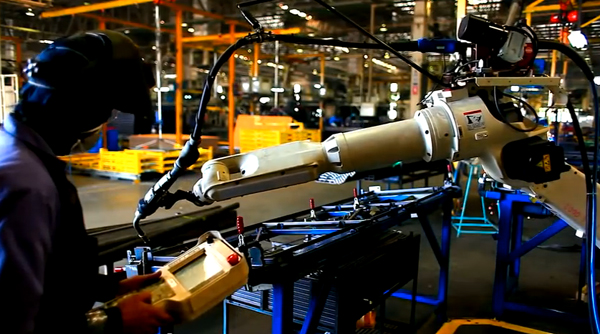
[Image above] A NSF-funded project to develop scalable algorithms and a computational framework to search the genome of advanced materials could advance the speed at which manufacturers could locate and deploy the right materials. Credit: National Science Foundation; YouTube.
Raise your hand if you know and respect the value of advanced materials.
Despite 21st century technology, I can’t see that your hand is raised—but regardless, I know that it is.
Whether you’re a student, scientist, manufacturer, or engineer—or any combination of the four—you get why advanced materials matter.
You also get why they need to be better, faster, and cheaper.
We rely on them to further parts and technologies—from the ceramic components in jet engines to sapphire glass screens in smartwatches—that improve the products and processes that impact our world.
It’s why, in 2011, President Obama introduced Materials Genome Initiative—a charge to discover, manufacture, and deploy those materials better, faster, and cheaper, thereby advancing and strengthening America’s manufacturing sector and the nation’s economic competitiveness around the globe.
But despite a commitment of $250 million and three years of progress, finding the right materials is still a lengthy and expensive process.
Would the ability to pinpoint them more easily and accurately enable manufacturers to get their products to market quicker?
Junzhou Huang, assistant professor of computer science and engineering at the University of Texas at Arlington, thinks so.
The National Science Foundation must think so, too, since it awarded Huang a $250,000 grant to help design “scalable algorithms and a computational framework that can search unprecedented volumes of data detailing the complete set of genes present in numerous materials.”
Huang will work with colleagues at the Colorado School of Mines on the project titled “Collaborative Research: Robust Materials Genome Data Mining Framework for Performance Prediction and Design Guidance of Nanoparticle Synthesis.” According to a UT Arlington release, the work seeks to improve current systems that create bottlenecks, not streamlined searches, for finding the material best suited for a particular project.
“We need to be smarter, more efficient and more effective in discovering new materials to build whatever we want,” says Huang in the news release. “What’s happened in the past is that designers have to simply try what they think might be the best material, but they don’t know for sure.”
Khosrow Behbehani, dean of UT’s College of Engineering, believes the impact of the research will stretch far beyond the Lone Star State and “could be important to every aspect of manufacturing.”
“It takes some of the guesswork out of the equation of deciding on what materials to use in building certain devices,” he says in the release.
